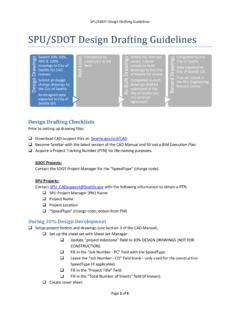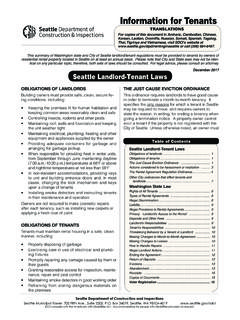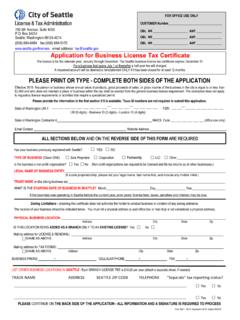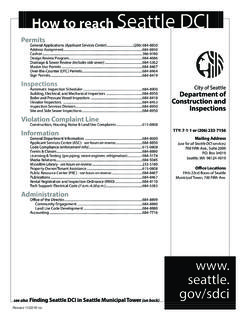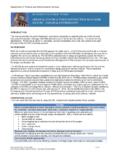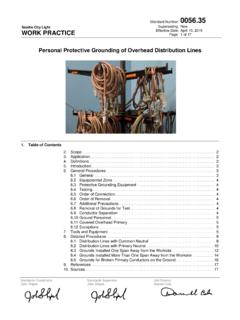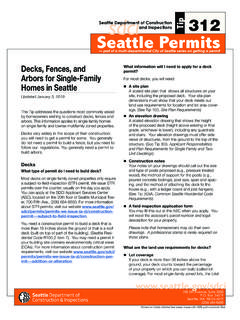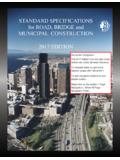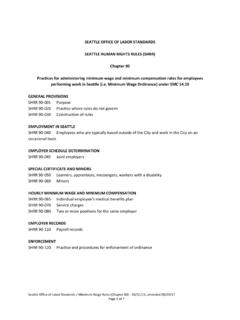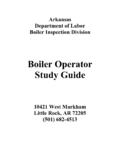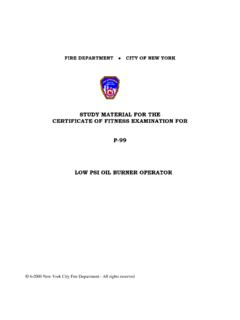Transcription of Steam Engineer & Boiler Fireman License - seattle.gov
1 study guide : Grade I & II Steam Engineer Trade Licensing Program Steam Engineer & Boiler Fireman License The applicant should be familiar with the information recommended for the lower grades ( Steam Engineer Grade III, Boiler Fireman Grades IV and V) as well as the following: 1. Sketch a Water Tube Boiler to indicate the following: 1. Support 2. Tube banks and Water walls 3. Tube headers 4. Water column 5. Gage glass 6. Vent 7. Boiler Steam outlet valve and header valve with drain connection 8. Safety valve(s). 9. Soot blowers 10. Baffles and flue gas flow 11. Furnace temperature at burners, furnace, passes, and discharge 12. Air preheaters 13. Economizer 14. Superheaters 15. Feedwater connections to include control valve, check valve, and supply or isolation valve 16. Surface blow line 17. Bottom blow 18. Breeching 19. Location of burners 2. Step by step procedure to start a condensing Steam turbine generator from completely down and cold to synchronizing the generator with an active bus and loading the generator.
2 3. Discuss the difference between loading an alternating current (AC) turbine-generator paralleled on the line and one not paralleled but carrying the complete connected load. Include the use and effect of the governor control and the voltage regulator in both cases. 4. Discuss the difference between an impulse and reaction turbine, an extraction turbine, back pressure turbine, reheat turbine compound turbine, and a re-entry turbine. Also general construction, dummy pistons, labyrinth rings, bearings, Kingsbury thrust bearing, lubrication, Steam admission control, overspeed trip, and speed/load control. And, in addition, consider safety shut down controls involving electrical faults, low oil pressure, or overspeed trip-out. 5. Discuss feedwater treatment and means or tests to determine proper levels of treatment for desired results. 6. Describe requirement to be met and how to conduct a hydrostatic test.
3 Also discuss how to conduct an accumulation test and give the reason for requiring such a test. 7. Discuss the relationship of current, voltage, resistance (IR=E), power (EI) or (I2 R), alternating current (AC), phases, direct current (DC), magnetic circuit and relationship to AC and DC current, Page 1 6/6/2017. transformers, DC magnetic coils, generator excitation, how AC and DC current is generated, AC. single phase and three phase motors, how rotation direction is controlled in single phase and three phase motors-AC, rotation direction obtained in DC motors, the use of collector rings, slip rings, commutators, induction, power factor, circuit breakers, time over-current relays, fuses, differential relays, low voltage relays, process of synchronism, meggers, etc. 8. Discuss the operation and troubleshooting a continuously operating 500 SCFM or larger air compressor to include loading control, temperature control, moisture removal, safety devices, air valves and determining faulty suction or exhaust valves.
4 Include intake filters, aftercooler, intercooler, and receiver. 9. Discuss Steam tables and the use of mollier charts to graphically illustrate the characteristics of Steam and water. Describe what is involved at critical pressure and temperature latent heat, sensible heat, superheat, Steam density, water density enthalpy of liquid, enthalpy of evaporation, enthalpy of superheated Steam and changes brought by changes of pressure. 10. Discuss barometric condensers and surface condensers, the advantage of using a condenser on a Steam turbine, and how the air is removed from a condenser. 11. Discuss the combustion control process giving the requirements for efficient combustion and how it is adapted to natural gas or fuel oil of all grades. Include an explanation of metered controls to obtain proper fuel-air ratio throughout Boiler load range. 12. Define the following terms related to Steam engineering: 1.
5 British thermal unit (BTU). 2. Foot pound 3. Latent heat 4. Specific gravity 5. Mechanical Equivalent 6. Inertia 7. Convection 8. Matter 9. Momentum 10. Siphon 11. Clearance pockets 12. Intercooler 13. Aftercooler 14. Horse power of engine 15. Axial flow 16. Dynamic 17. Static 18. Alkaline 19. Atomic weight 20. Electron 21. Ampere 22. Volt 23. Resistance 24. Power 25. Barometer 26. Hydrometer 27. Boyles Law Page 2 6/6/2017. 28. Capillary 29. Caustic Soda 30. Oscillation 31. Center of Gravity 32. Centrifugal Force 33. Density 34. Back Pressure 35. Enthalpy 13. Discuss feedwater heater maintenance, operation and uses for deaerating and closed types. 14. Discuss ingredients and qualities of lubricating oils to include how they are filtered, applied and stored. 15. Discuss the various types of desuperheaters, location, and need. 16. Knowledge of the City of seattle " Steam Engineer and Boiler Fireman License Law.
6 " and the seattle Boiler and Pressure Vessel Code . 17. Definitions 18. License requirements and expiration 19. Exemptions from License requirements 20. Grades of licenses 21. Maximum capacity allowable for grades and licenses 22. Issuance of licenses, Method and requirements 23. Special License 24. Department of Construction and Land Use 25. Licenses to be posted or carried 26. Notice of place of employment 27. Reporting of defective boilers 28. Duties of Steam Engineers and Boiler Fireman 29. Observation and inspection of boilers 30. Posting of regulations 31. Sketch a pressure reducing station showing all valves, gages, and safety devices. Discuss the relationship between the entering Steam and the leaving Steam . Page 3 6/6/2017.
